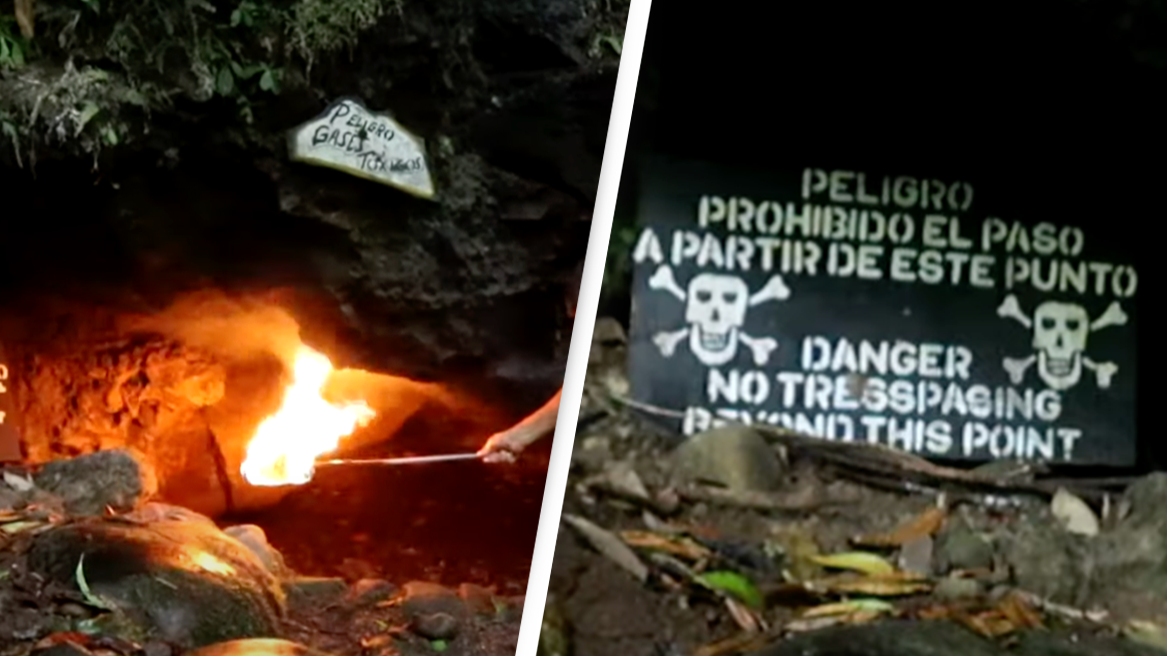In a chilling demonstration of nature’s power, a recent incident at Costa Rica’s notorious “Cave of Death” captivated audiences worldwide. On April 7, a man stood at the entrance of the cave, located in Alajuela, holding a lit torch that mysteriously extinguished upon facing the cave’s ominous depths. This phenomenon underscores the perilous conditions within the cave, primarily due to its high concentrations of carbon dioxide emanating from volcanic activity in the region.
Unveiling the “Cave of Death”
The “Cave of Death,” or Cueva de la Muerte, is as foreboding as its name suggests. Nestled in the volcanic landscapes of Alajuela, this natural wonder is known for its deadly atmosphere, which poses a lethal threat to any living creature that dares to enter. The cave’s environment is saturated with nearly pure carbon dioxide, a byproduct of the volcanic activity that plagues this part of Costa Rica.
A Natural Phenomenon Explained
The extinguishing of a torch in such an environment is not just eerie but scientifically significant. Carbon dioxide, being a heavier gas than oxygen, settles at the lower parts of the cave. When the concentration of this gas exceeds a certain threshold, it displaces the oxygen needed to sustain both fire and life. The man’s torch likely went out due to this suffocating blanket of carbon dioxide, demonstrating the cave’s inhospitable conditions.
The Dangers Lurking Within
The “Cave of Death” has long been a subject of both fascination and fear. Its ability to snuff out life with its invisible, odorless gas makes it a rare but potent natural hazard. The cave serves as a stark reminder of the deadly power hidden beneath the Earth’s surface and the risks associated with volcanic regions.
Despite its dangers, the cave attracts the brave and curious, drawn by its legendary status and the natural curiosity to explore the unknown. However, local authorities and geologists warn against entering the cave, as the risk of asphyxiation is high and the environment inside is not conducive to human survival.
Scientific and Educational Significance
While the “Cave of Death” poses significant dangers, it also offers valuable scientific and educational opportunities. Researchers studying volcanic activity and gas compositions use the cave as a natural laboratory to better understand subterranean gas dynamics and their effects on the surrounding environment. Additionally, the cave is a practical example used in educational settings to illustrate the dangers of volcanic gases and the importance of respecting natural hazards.
Tourist Attraction with a Caution
For the tourism industry, the “Cave of Death” presents a unique attraction that draws visitors to Alajuela. However, promoting such a site comes with the responsibility of ensuring tourist safety. Informative signs, guided tours with safety gear, and strict regulations are necessary to prevent accidents and fatalities. The cave’s allure does not only lie in its potential danger but also in the respect and caution it demands from those who wish to explore it.
The “Cave of Death” in Costa Rica offers a dramatic reminder of the dangers posed by natural phenomena and the respect they command. The recent incident of the extinguishing torch serves as a real-time demonstration of the cave’s lethal environment, sparked by the geological activity that defines much of Costa Rica’s landscape. For those fascinated by the forces of nature, the cave is a compelling site of study and cautionary tale, reminding us of the power and mystery of the planet we inhabit.

